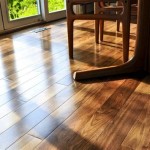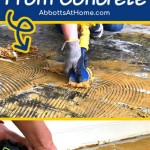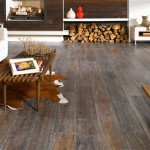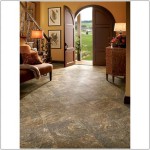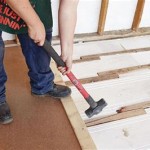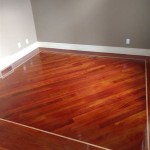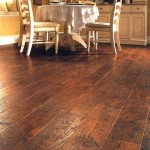Is Vinyl Flooring Good For Stairs? A Comprehensive Evaluation
Vinyl flooring has become a popular choice for homeowners due to its affordability, durability, and aesthetic versatility. It is available in a wide range of styles, from planks and tiles replicating hardwood to sheet vinyl offering seamless coverage. As a result, the question of whether vinyl flooring is a suitable option for stairs arises frequently. This article will explore the advantages and disadvantages of using vinyl flooring on stairs, considering various factors like safety, installation complexity, and long-term performance.
The decision to install vinyl flooring on stairs is not a straightforward one. While vinyl offers certain benefits, it also presents unique challenges that must be carefully evaluated. The suitability of vinyl for stairs depends on the specific type of vinyl, the condition of the existing staircase, and the installer's expertise. This article aims to provide a comprehensive overview to aid in making an informed decision.
Durability and Resistance to Wear and Tear
One of the primary advantages of vinyl flooring, in general, is its inherent durability. High-quality vinyl is designed to withstand heavy foot traffic, making it a potential contender for use on stairs. Stairs, by their very nature, experience significant wear and tear, especially in high-traffic areas of the home. Scuffs, scratches, and dents are common occurrences.
The wear layer of vinyl flooring plays a critical role in its overall durability. A thicker wear layer provides greater protection against surface damage. For stair applications, it is recommended to select vinyl flooring with a substantial wear layer, typically 20 mils or greater. This thicker layer can better withstand the constant abrasion and impact associated with stair traffic.
Furthermore, the composition of the vinyl itself contributes to its robustness. Luxury vinyl plank (LVP) and luxury vinyl tile (LVT) are generally considered more durable than standard sheet vinyl. This is due to their multi-layered construction and the use of higher-quality materials. LVP and LVT are often designed to mimic the look and feel of hardwood or stone, while also providing superior resistance to scratches, stains, and water damage. This makes them a strong contender for stair applications, especially in households with children or pets.
However, even with a thick wear layer, vinyl flooring is not impervious to damage. Sharp objects, such as dropped keys or tools, can still potentially scratch or dent the surface. Regular maintenance, including sweeping and mopping, is essential to prevent the accumulation of dirt and debris that can accelerate wear and tear. Additionally, using protective mats or runners on high-traffic areas of the stairs can further extend the lifespan of the vinyl flooring.
In comparison to other common stair flooring options, such as carpet or hardwood, vinyl offers a distinct advantage in terms of water resistance. Carpet can easily stain and harbor moisture, leading to mold and mildew growth. Hardwood, while durable, is susceptible to water damage and can warp or rot if exposed to excessive moisture. Vinyl, on the other hand, is inherently waterproof (though its installation might not be). This makes it a suitable choice for stairs in areas prone to spills or high humidity, such as entryways or basements.
Safety Considerations: Slip Resistance and Proper Installation
Safety is paramount when selecting flooring for stairs. Stairs present a potential fall hazard, and choosing a flooring material with adequate slip resistance is crucial. Vinyl flooring, in its standard form, can be relatively smooth and slippery, especially when wet. Therefore, it is imperative to select a vinyl product specifically designed to provide enhanced traction.
Many vinyl flooring manufacturers offer products with textured surfaces or slip-resistant coatings. These features increase the coefficient of friction, making the surface less slippery and reducing the risk of falls. It is advisable to look for vinyl flooring with a slip-resistance rating that meets or exceeds industry standards for stair applications. Consulting with a flooring professional can help in selecting the appropriate product for the specific needs and conditions of the staircase.
Proper installation is equally critical to ensuring the safety of vinyl flooring on stairs. A poorly installed vinyl floor can create tripping hazards or become loose over time, increasing the risk of accidents. It is generally recommended to hire a professional installer with experience in working with vinyl flooring on stairs. A skilled installer will ensure that the vinyl is properly adhered to the stair treads and risers, creating a secure and stable surface.
One common installation method involves using a specialized adhesive to bond the vinyl flooring to the stairs. The adhesive must be compatible with both the vinyl material and the substrate of the stairs. Proper surface preparation is also essential to ensure a strong and lasting bond. This may involve cleaning, sanding, or leveling the stair surfaces before applying the adhesive. The installer must also pay close attention to detail during the cutting and fitting process, ensuring that the vinyl is seamlessly integrated into the stair structure.
Another important safety consideration is the use of stair nosing. Stair nosing is a protective edge that is installed along the front edge of each stair tread. It provides a visual cue for the edge of the stair and helps to prevent slips and falls. Stair nosing is particularly important when using vinyl flooring on stairs, as the vinyl material can be relatively thin and may not provide adequate edge protection on its own. Stair nosing helps protect the edges from wear and tear, while also providing a better grip.
Furthermore, the lighting on the stairs should be adequate to ensure visibility. Poor lighting can make it difficult to see the edges of the stairs, increasing the risk of falls. Installing adequate lighting, such as overhead fixtures or stair lights, can significantly improve safety on the stairs.
Installation Challenges and Considerations
While vinyl flooring offers certain advantages for stairs, the installation process can be more complex compared to installing it on a flat surface. The irregular shape of stairs, with their treads, risers, and angles, requires precise cutting and fitting. This can be particularly challenging for DIY projects, and it is often recommended to hire a professional installer with experience in stair applications, as mentioned above.
One of the key challenges in installing vinyl on stairs is achieving a seamless and aesthetically pleasing finish. The vinyl must be accurately cut and fitted to each tread and riser, ensuring that there are no gaps or overlaps. This requires careful measurement and meticulous attention to detail. In addition, the vinyl must be properly aligned to maintain a consistent pattern or grain throughout the staircase.
Another consideration is the potential for air pockets or bubbles to form beneath the vinyl during installation. These air pockets can compromise the adhesion of the vinyl and create uneven surfaces that are prone to wear and tear. To prevent this, it is essential to use a roller to firmly press the vinyl against the stair surfaces, ensuring that all air is expelled. The adhesive must also be applied evenly and in the correct amount to avoid trapping air.
The type of staircase also influences the complexity of the installation. Straight staircases are generally easier to work with compared to curved or spiral staircases, which require more intricate cutting and fitting. In addition, the condition of the existing staircase can impact the installation process. If the stairs are uneven or damaged, they may need to be repaired or leveled before installing the vinyl flooring. This can add to the time and cost of the project.
When selecting vinyl flooring for stairs, it is important to choose a product that is flexible enough to conform to the contours of the stairs. Rigid vinyl planks or tiles may be difficult to bend and mold around the edges of the treads and risers. More flexible vinyl options, such as sheet vinyl or thinner LVP, may be easier to work with in these situations.
Finally, the use of transition strips or molding can help to create a smooth and seamless transition between the vinyl flooring on the stairs and the flooring in adjacent areas. Transition strips are typically used at the top and bottom of the staircase to bridge the gap between different flooring materials. Molding can also be used to conceal any exposed edges or gaps around the perimeter of the stairs.

Pros And Cons Of Installing Vinyl Flooring On Stairs Lx Hausys

Pros And Cons Of Installing Vinyl Flooring On Stairs

How To Install Vinyl Plank Flooring On Stairs In 6 Steps

Is Vinyl Flooring Good For Stairs Luxury Floorbay

Pros And Cons Of Installing Vinyl Flooring On Stairs

Pros And Cons Of Installing Vinyl Flooring On Stairs Lx Hausys

Pros And Cons Of Installing Vinyl Flooring On Stairs Lx Hausys

Luxury Vinyl Tile Seamless Upstairs And Downstairs Solution

Installing Vinyl Flooring On Stairs Singapore

How To Install Luxury Vinyl Plank Laminate Flooring On Stairs
See Also
